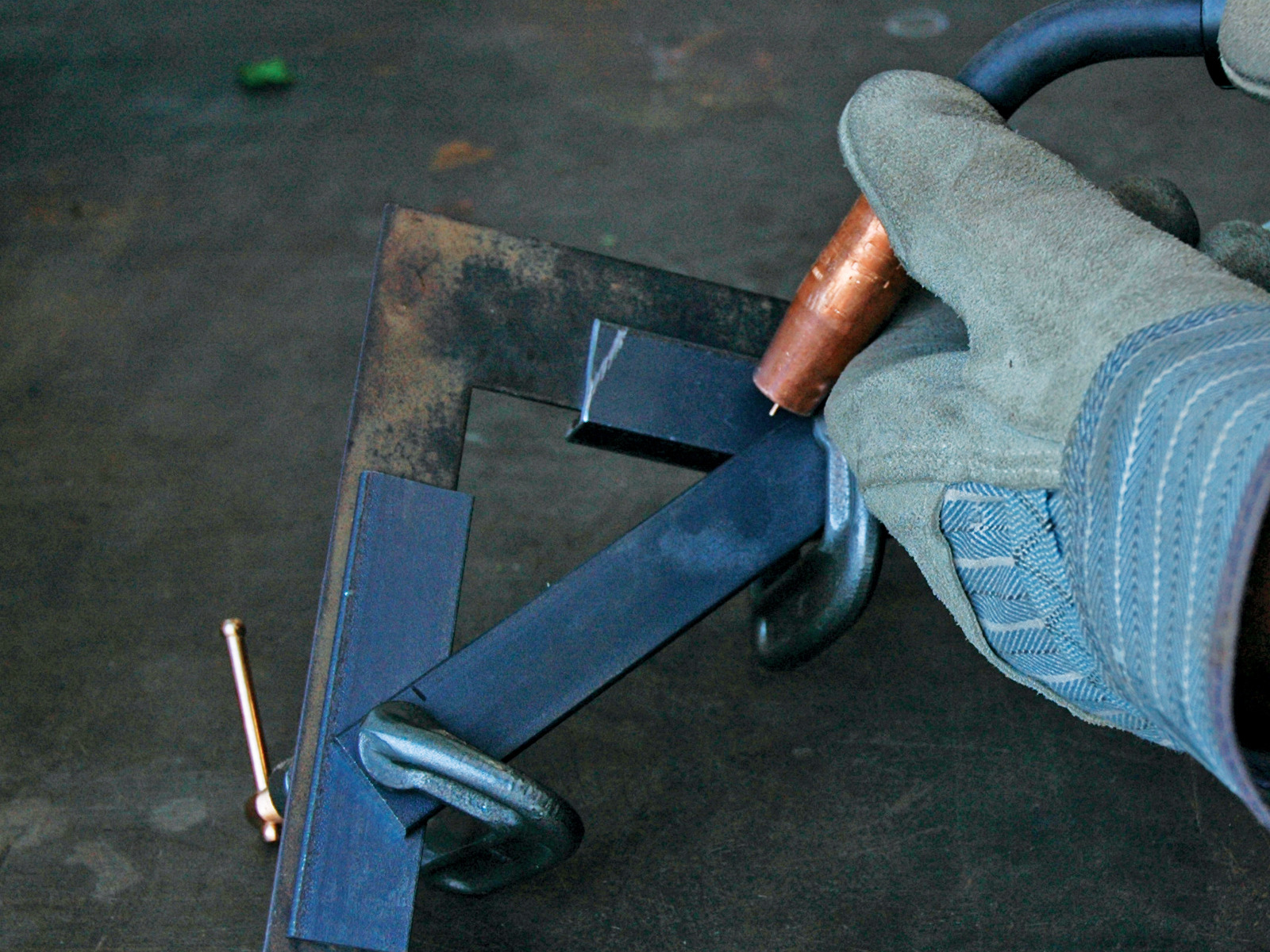A joint that is not clean and tight will end up having an ugly, weak weld. Let’s make a jig, an invaluable tool that holds two chunks of metal at right angles while allowing ample room to weld tacks in the corner.
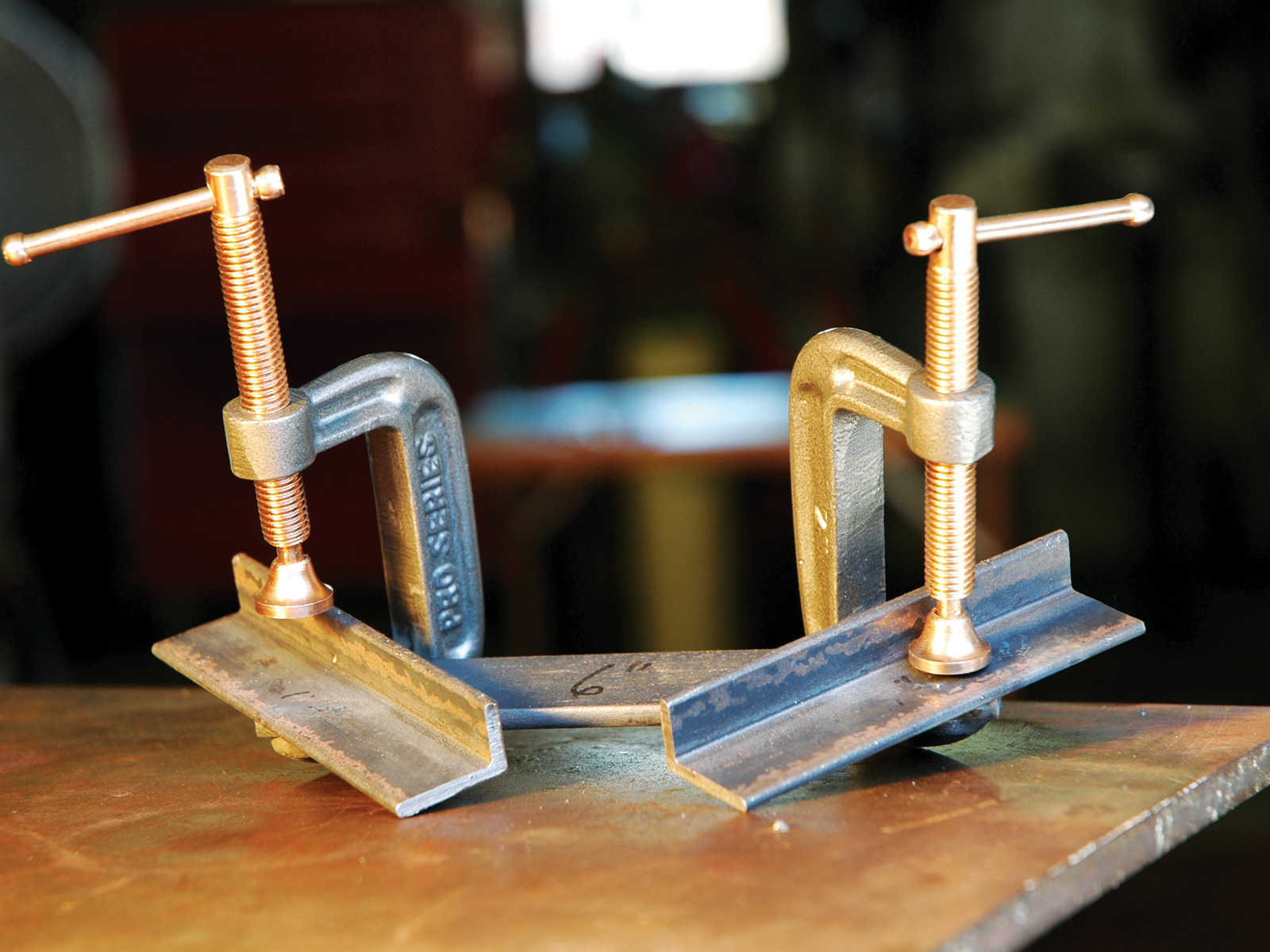
Lay out and clamp.
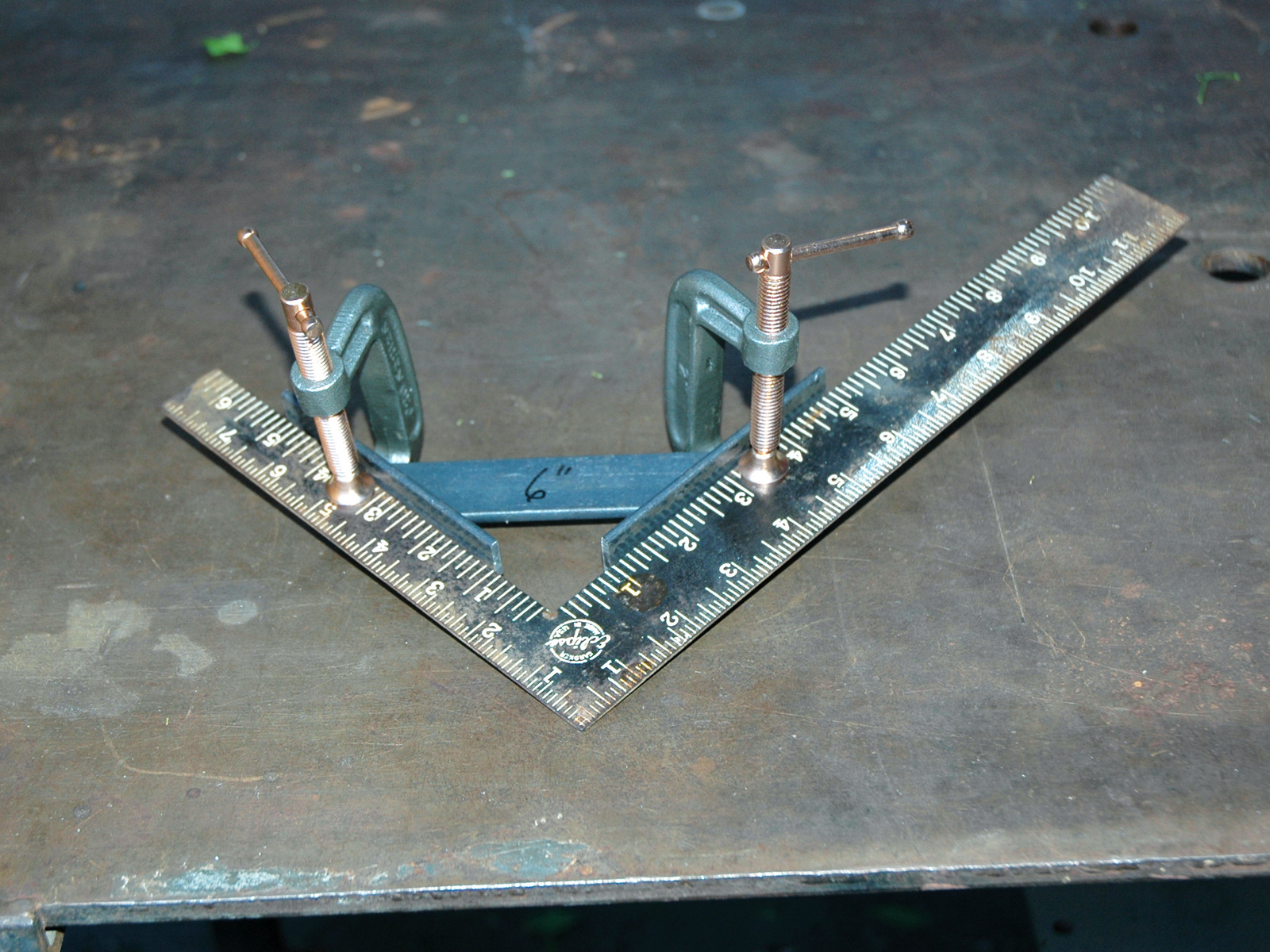
Lay out the angle iron on the inside of the square and measure 1” from the inside corner. Clamp the cross bar behind it at about the 3” point.
Don’t use your granddaddy’s favorite square. Anything could happen!
When welded, the diagonal cross bar will hold the angle iron at 90 degrees until California falls in the ocean.
Flip it and weld.
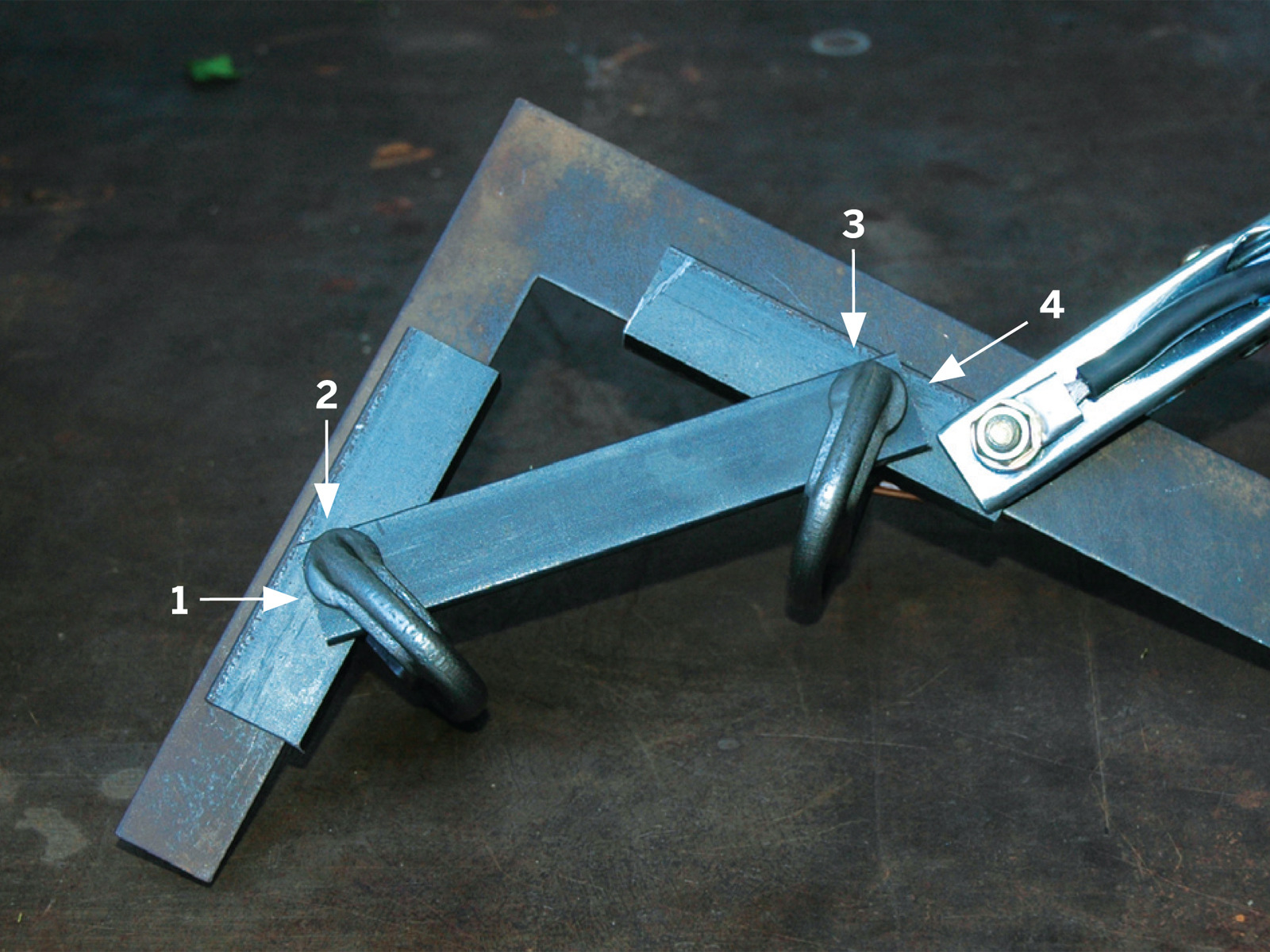
Make sure the clamps are right and flip it over. Weld tacks at points 1, 2, 3, and 4. Tack weld a nice, hot tack at each of the points.
Try G-4 for about 1 second at each point. The tack welds don’t have to be gigantic, since they are just holding it together so you can remove the clamps and weld a bead. Re-trim the wire stick-out to 3/8” after each weld.
Examine the tacks.

A pair of not great-looking tacks, but it will hold. The left tack is particularly puny and I should have continued welding for another half second.
Weld beads and tack the clamp.
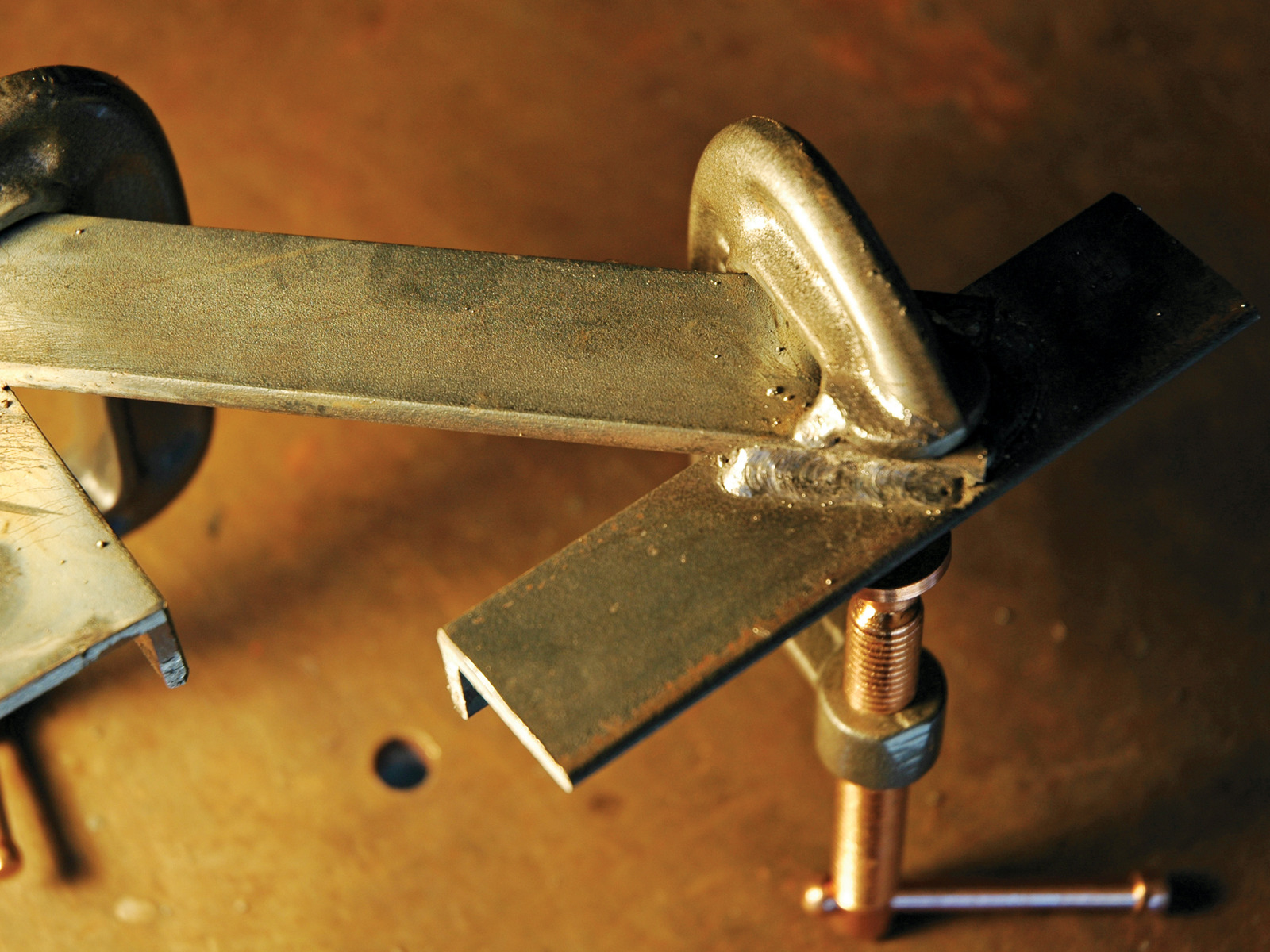
As with the sample beads, start on the left and drag across to the right.
With a 3/8” stick-out, touch the wire joint between the angle and flat bar, pull the trigger, and keep at a 45° angle.
Like laying a bead of caulk, just fill the joint with metal!
Before tacking the clamp, make sure to remove any paint from the clamp edges that will be welded. Then, tack it like you tacked the angle iron. Repeat both sides, both clamps.
Conclusion
This project first appeared in MAKE Volume 03.


